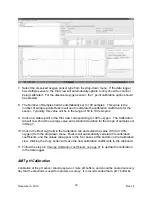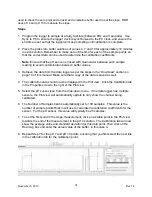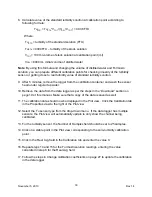
Ruskin calculates the Specific Conductivity from Standard Methods for the
Examination of Water and Wastewater (1989) Ch. 2, L. S. Clesceri et al Eds.,
American Public Health Association, Washington D.C., 17
th
Ed.
6. If you want to calculate salinity using any XR-420/620-CT/CTD logger, under
Salinity, select the
Practical Salinity Scale
check box.
7. If you want to calculate the speed of sound using any XR-420/620-CT/CTD logger,
under Speed of Sound, select the formula that you want to use, one of UNESCO, del
Grosso, or Wilson.
Add dissolved oxygen as a derived channel
You can derive a dissolved oxygen channel that measures the oxygen saturation as a
percentage. The data calculated for this derived channel appears along with measured
channels in the Plot view and in datasets.
Steps
1. From the Options menu, click
Preferences
.
2. In the list on the left side of the Preferences dialog box, click
Derived Channels
.
3. Click the
Dissolved O2
tab and select the
Enable Dissolved Oxygen Channel
check box.
4. If any of your loggers use the Oxyguard DO sensor to measure oxygen saturation
and you want to use the Weiss equation, select the
Calculate concentration using
the Weiss equation
check box and select the output unit, one of µMol/l, mg/l or ml/l.
The Weiss equation requires values for temperature and salinity. If your logger does
not measure these things, you can specify standard values on the No sensor values
tab.
5. If any of your loggers use the Aanderaa Optode DO sensor to measure oxygen
concentration, select the
Calculate concentration
check box and select the output
unit, either mg/l or ml/l.
6. If any of your loggers use the Aanderaa Optode DO sensor to measure oxygen
saturation, select the
Calculate saturation using the Garcia and Gordon equation
check box.
The Garcia and Gordon equation requires values for temperature and salinity. If your
logger does not measure these things, you can specify standard values on the No
sensor values tab.
November 5, 2010
Rev1.4
40
















































